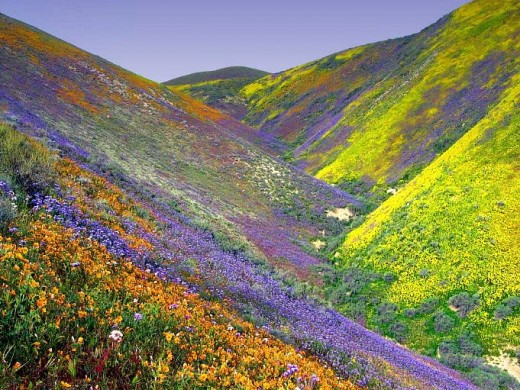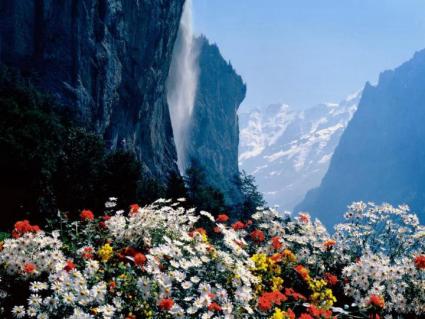Is the Sky really Blue? Are the Trees really Green?

This is a question I grew up asking. Not as a child asks the normal questions about the world, but as a true informational question. My parents, highly educated but experimental-thinking, debated before I was born on teaching their child the "wrong" colors for things. Specifically, that the grass was blue and the sky was green.
In the end, they decided to teach me "normal" colors, but also bring me up bilingual. So, in a sense, they did their experiment.

Words as Labels
Words are, essentially, how we label and categorize the world around us. To communicate, people need names for objects, distinguishing characteristics, changes, and other representations. Basically, our words recreate our lives in conversation.
Try speaking without using any nouns or verbs. Basic language probably started out with the proverbial "grunt and point", then someone decided that a particular sound meant a particular object. That person taught another person that sound-object connection, and it became a label. The label (word) was passed on from person to person, with more labels added for other objects, which in turn became a language.

What Colors Are
Colors are different variances in the light spectrum. When light refracts, "white" light is rebounded into various wavelengths. Each specific length defines the color we see. All light particles at one particular wavelength are perceived as being the same color. As well, particles at close wavelengths to that color are perceived as that color.
There are infinite variations in wavelengths, so there are infinite variations in color. Our brains group the wavelengths into categories to keep track of them. In the picture at right, how many variations of blue do you see?

Defining the Indefinite
If there is a color in-between red and orange, like some of the leaves in this picture, how do our brains decide which it is? This is where words come in. If you have been taught that "red" only means the color of fire engines, then the leaves will look orange to you. If you have been taught that "orange" only means the color of the inside of a pumpkin, then the leaves will look reddish to you. The leaves on the ground are from the same trees, but they look different colors than the ones still on the branches.
Colors in other Languages
Anyone who has ever learned another language by immersion knows how difficult it is to remember which word goes with which object or concept at first. After much repetition, you learn that what you are used to calling "red" in English is "rojo" in Spanish, "rød" in Norwegian, or "guduud" in Somali. While you are learning this, though, your brain is saying "No, it's red". In essence, this is how we learn what things are called in our first language as well.
So why is the Sky Blue and a Tree Green?
So, the sky is "blue" because someone thought up the color name and attached it to the color. A tree is "green" for the same reason. Anything can be called any pattern of sounds, just so long as the same pattern is used for the same thing consistently. It becomes a word when it is taught to others as a paired sound-object.
If my parents had taught me that the sky was green, then I would call the color of most people's jeans "green" too. As it is, I call the sky color (and jeans color) both "blue" and "blå".








